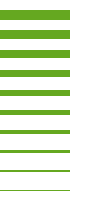https://doi.io-warnemuende.de/10.12754/msr-2009-0078
doi:10.12754/msr-2009-0078
© Author(s) 2009. This work is distributed
under

Dieses Werk ist lizenziert unter einer Creative Commons Namensnennung - Nicht kommerziell - Keine Bearbeitungen 4.0 International Lizenz.
Biologische Zustandseinschätzung der Ostsee im Jahre 2008
Abstract. The time series on species composition and biomass or abundance of phyto- and zooplankton as well as macrozoobenthos in the Belt Sea and the Baltic proper, existing since 1979, was continued in 2008. The phytoplankton spring bloom in Mecklenburg Bight in March 2008 was mainly composed of Dictyocha speculum and diatoms. Thus the finding of 2007 (early Dictyocha bloom and suppressed diatom and dinoflagellate growth) repeated in a more moderate form. In the eastern Mecklenburg Bight and in the Arkona Sea, Mesodinium rubrum and Skeletonema costatum dominated at the end of March. During and after the spring bloom, Chrysochromulina spp. developed exceptionally. It formed a bloom, together with Peridiniella catenata, in the Eastern Gotland Sea. A diatom summer bloom was found in Lübeck Bight. A cyanobacteria bloom appeared in the Baltic Proper in July (see also satellite images). In autumn, the typical combined Ceratium/diatom bloom developed in Mecklenburg bight, but a Coscinodiscus bloom in the Arkona and Bornholm Seas. Chlorophyll a data revealed a decreasing trend from 1979-2008 in Mecklenburg Bight but an increase in the Arkona and Bornholm Seas if only the spring data were considered. Summer and autumn data increased only in the Eastern Gotland Sea. Data of sedimentation in the Gotland Basin in 2007 showed a vertical flux of 585 mmol C, 70 mmol N, 221 mmol Si and 2.3 mmol P per m2 and year. With 43.9 g a-1 dry material the mass flux was considerable higher than in the previous year (28.5 g a-1). Bulk sedimentation of organic matter troughout the spring phase exceeded that of the previous year by 40 %. Summer sedimentation of material based on nitrogen fixation decreased in comparison to the long term values. Autumn rates showed an increase. The number of mesozooplankton taxa amounted to 41 in the last 10 years. The maximum in 2008 was found in July/August. The abundance of Oithona similis, an indicator for higher saline water, declined to nearly zero in the Gotland Sea, caused by a narrowing of its habitat layer of oxygenated water with adequate salinity from 160 m to 30 m. The long-term decrease in maximum abundance since the 1990s, especially in rotifers, continues. The maximum abundance of Bosmina spp. was lower than expected from its temperature preference. The 109 species found in the macrozoobenthos in 2008 mark a medium diversity during the last 18 years at the monitoring stations sampled by the IOW. The re-deficit of oxygen (also in 2002 and 2005), which effected the deep areas of the Fehmarnbelt and Mecklenburg Bight, caused a decrease of species number and abundances. The negative trend in abundance and biomass observed at the Darss Sill until 2004 due to an decrease in Hydrobia ulvae and Pygospio elegans, ceased. Species number, abundance and biomass stabilized in the Arkona Sea. The Pomeranian Bay shows a relatively stable macrobenthic community. At the 8 monitoring stations altogether 23 species of the Red List could be observed. In respect to the Water Framework Directive and the Marine Strategy Directive the ecological status of the 8 stations, deviated from the BQI (Benthic Quality Index), ranged between “poor” and “high”.
Abstract. Die 1979 begonnene HELCOM-Datenreihe der Artenzusammensetzung und Biomasse bzw. Abundanz des Phyto- und Zooplanktons sowie des Makrozoobenthos wurde im Jahre 2008 in der Beltsee und der eigentlichen Ostsee fortgesetzt. Die Phytoplankton-Frühjahrsblüte in der Mecklenburger Bucht im März 2008 bestand hauptsächlich aus Dictyocha speculum und Kieselalgen. Damit wiederholt sich die Situation von 2007 (frühe Dictyocha-Blüte, reduziertes Kieselalgen- und Dinoflagellatenwachstum) in abgemilderter Form. Während und nach der Frühjahrsblüte entwickelte sich Chrysochromulina ungewöhnlich stark. In der Gotlandsee bildete es zusammen mit Peridiniella catenata eine Blüte. Eine Kieselalgen-Sommerblüte wurde nur in der Lübecker Bucht gefunden. Die Cyanobakterienblüte erschien in der eigentlichen Ostsee im Juli (siehe auch Satellitenbilder). Im Herbst erschien in der Mecklenburger Bucht die typische Ceratium/Kieselalgen-Mischblüte und in der Arkona- und Bornholmsee die Coscinodiscus- Blüte. Die Frühjahrsdaten des Chlorophyll a zeigten von 1979 bis 2008 einen abnehmenden Trend in der Mecklenburger Bucht und eine Zunahme in der Arkona- und Bornholmsee. Die Sommer- und Herbstwerte stiegen nur in der östlichen Gotlandsee an. Die Sedimentation im Gotlandbecken im Jahre 2007 zeigte einen vertikalen Fluss von 585 mmol C, 70 mmol N, 221 mmol Si und 2,3 mmol P pro m2 und Jahr. Mit 43,9 g TM a-1 war der Massefluss deutlich höher als in 2006 (28,5 g a-1). Die Sedimentation organischen Materials im Frühjahr überstieg die des Vorjahres um 40 %. Die sommerliche Sedimentation von Material, das aus N-Fixierung entstanden war, reduzierte sich jedoch. Herbstraten stiegen an. Das Anzahl der Mesozooplankton-Taxa betrug 41 über die letzten 10 Jahre. Das Maximum wurde im Jahre 2008 im Juli/August gefunden. Das Abundanz von Oithona similis sank im Gotlandbecken auf fast Null, weil sich die als Habitat geeignete oxische, salzreiche Schicht von 160 auf 30 m verringerte. Die Abnahme der Maximal-Abundanz seit den 1990ern, besonders bei Rotatorien, setzte sich fort. Die Maximal-Abundanz von Bosmina spp. war geringer als aus den Sommertemperaturen zu erwarten war. Die Artenzahl des Makrozoobenthos an den 8 Untersuchungsstationen zeigte mit 109 eine mittlere Diversität im Verlaufe der 18 Untersuchungsjahre an. Das erneute Sauerstoffdefizit (wie schon in 2002 und 2005) verursachte ein Absinken der Artenzahl und Abundanz in den tiefen Bereichen des Fehmarnbelts und der Mecklenburger Bucht. Der bis 2004 bestehende negative Abundanz- und Biomassetrend an der Darßer Schwelle, wegen Rückgangs von Hydrobia ulvae und Pygospio elegans, ist nicht mehr vorhanden. Artenzahl, Abundanz und Biomasse stabilisierten sich in der Arkonasee. Die Makrozoobenthos-Gemeinschaft in der Pommerschen Bucht ist stabil. 23 Arten der Roten Liste wurden erfasst. Der ökologische Status der 8 Untersuchungsstationen reicht von "unbefriedigend" bis "sehr gut".
